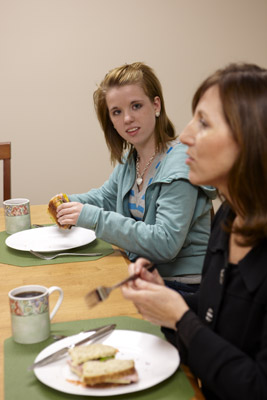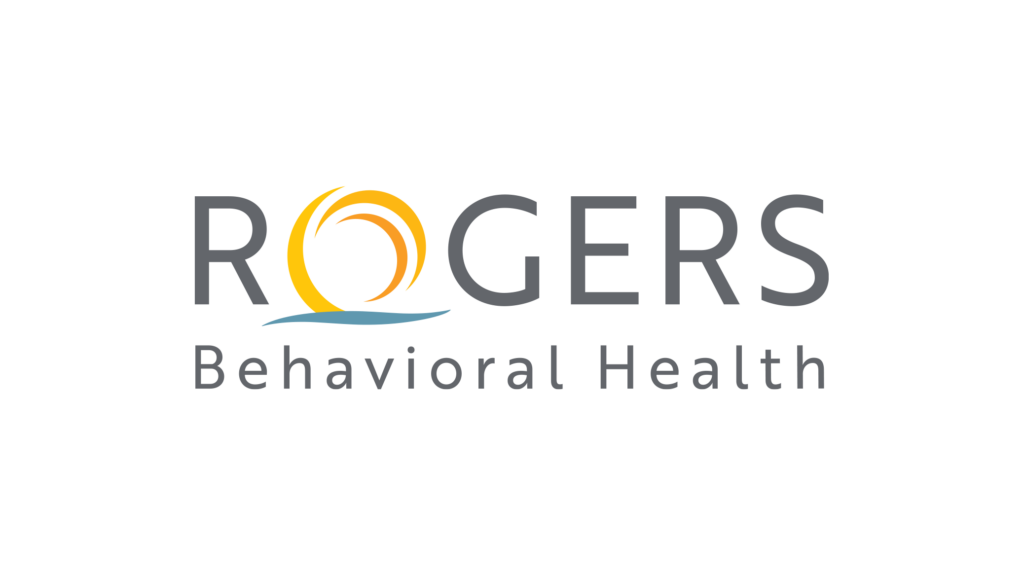
One of the benefits of residential treatment for eating disorders is the structure and support that is built in to every activity, including meal and snack times. Sarah Biskobing, RD, CD, a dietitian for Rogers Behavioral Health, said that these times can be one of the most anxiety provoking parts of a patient’s day. As a result, there is always a treatment team member available to support them as they learn to adapt to normal eating habits.
Sarah says that her job at Rogers is to create a meal plan for each patient based on their individual nutritional needs. During a typical eating disorder treatment stay at the Eating Disorder Center, the patients learn what appropriate serving sizes are within each of the food groups and how to include a variety of foods into their meal plan. “Balance is the key,” Sarah said. “There isn’t one perfect food that will keep you healthy. Rather it is balance, variety, and portion size within each food group that keeps us healthy and nourished.”
Patients get the support they need
Sarah’s job includes teaching the patients what a normal plate of food looks like for their individual nutritional needs. It also includes working through foods that are anxiety provoking and often times a trigger for some kind of eating disorder behavior. These foods are commonly referred to as “fear foods.” Nutritional challenges to address these fear foods occur consistently throughout the patient’s stay. The constant one-on-one support from a treatment team member is vital in helping the patients work through these needed food challenges.
Sarah explained that it’s hard for patients to focus on enjoying time together when eating because they can become entwined in their thoughts about the foods that have been placed before them. For many, when their eating disordered behaviors take hold, they can think about little else outside of the calorie content of the foods. “Sometimes, we can actually see it on their faces when they’re having trouble,” Sarah said. “Our job as a treatment team is to help them challenge their eating disorder thoughts that hold them hostage. Sometimes, they might just need us to encourage them to take the next bite and help them talk through the issues that might be affecting them.”
Treatment plan includes real world experiences
Aside from mealtimes and snacks that occur within the Eating Disorder Center, the dietary department regularly implements several real world experiences in which food plays a primary role. At least monthly, the patients are taken out to eat at a local restaurant where they practice estimating their meal plans outside of the safe environment of the Eating Disorder Center. “My goal is to teach patients that eating out doesn’t automatically equate to weight gain. It is possible to fit any type of food into a meal plan. It is also possible to begin to enjoy food, as well as the social experience that often surrounds it,” Sarah said.
A Life Skills group is also implemented regularly for patients who need assistance and guidance in the areas of menu planning, grocery shopping, and cooking. Sarah said that members of the treatment team are always trying to implement individualized challenges whenever possible. Food challenges may be incorporated into meals and snacks, family outings and may address concerns related to the use of normal serving utensils in the dining room.
Breaking out of eating disorder behaviors
Sarah said that she wants to make sure the patients are breaking out of their old behaviors and viewing mealtimes as an enjoyable part of their day. “For the most part, my goal is for the patients to learn that food isn’t the enemy.”
How we can help
For admission information or a free screening, call 800-767-4411, or submit an online screening request.
If you do not feel your child needs treatment right away, but may be concerned, we offer online quizzes to possibly provide some relief. While these quizzes do not provide a diagnosis, it could be the first step in finding the treatment you may need. Take our online Eating Disorder Quiz today.


